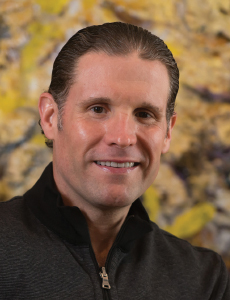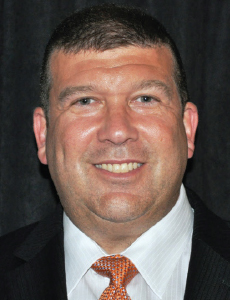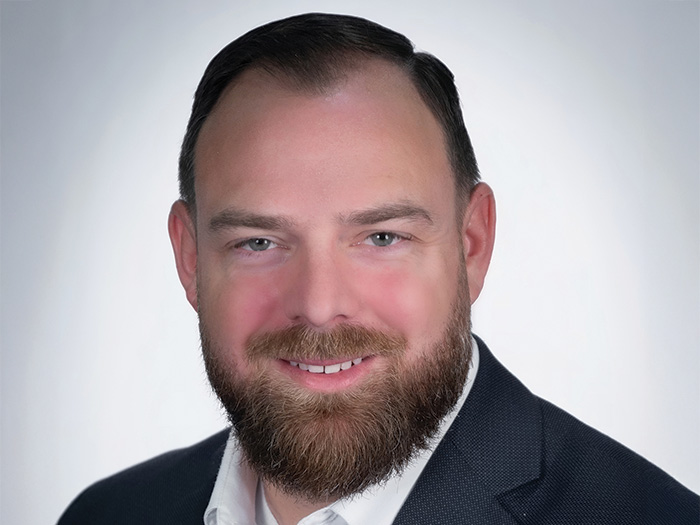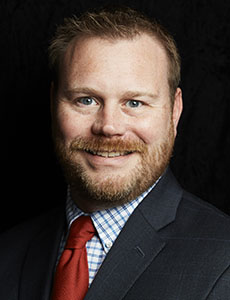Memory Care
The Dying Light

Consider first these numbers.
There are 5.2 million people in the U.S. suffering from Alzheimer’s, the chief form of dementia that is invariably fatal, usually within eight to 10 years of diagnosis.
With age being the chief risk factor, and the baby boomer generation crossing over the age of 65 by the thousands every day, the number of people with Alzheimer’s and other forms of dementia in this country is expected to grow to between 14 million and 16 million by 2050.
Ten to 15 years ago, the sector of health care referred to as memory care was barely known. Now, those that own and manage long-term health care facilities say it is the fastest growing segment in their industry.
“It’s off the charts,” is how Tim Goux, the founder and CEO of CareRise, a New Orleans-based post-acute-care risk management company, described the growth in the construction of memory care wings and stand-alone facilities.
“The need for quality memory care communities is unprecedented,” said Frank Russo, senior vice president, risk and legal affairs at Silverado Senior Living, an Irvine, Calif.-based company that devotes itself exclusively to the care of patients with Alzheimer’s and other forms of dementia.
Lancaster Pollard, a privately held investment banking firm based in Columbus, Ohio, conducts an annual survey of C-suite executives in the long-term health care space.
Steve Kennedy, a senior managing director with the company, said that 61 percent of those executives surveyed feel that memory care will be the fastest growing segment in the senior living space in 2016.
Kennedy said construction investment in the space ran about $4 billion in 2015 and is ticking up at about a 5 percent pace annually.
“There is enormous and continuous demand for stand- alone memory care communities and as a result we are witnessing more construction of new memory care facilities than we have ever seen before,” said Silverado’s Russo.
“It’s a disease and a condition that is expensive and unfortunately, there is no current cure,” said Kennedy. “It’s sad what’s driven the growth of this.
“But on the positive side, having a significant number of facilities that can meet the very specific and unique needs of dementia and Alzheimer’s patients is a blessing that didn’t exist five years ago.”
Bank lending has gotten tighter, but there are enough private and public sector lending sources to build facilities.
The demand, the need, is certainly there. And insurance capacity, while cautious, is ample in long-term health care.
A Formidable List of Risks
This all brings us to the risks, and the risks in memory care are formidable.
To begin with, we are talking about a patient population that is losing and will completely lose one of the most important tools a patient can have: the capacity to cooperate and take an active role in their health care and well-being.
“Let’s say you are on a liquid diet. They have a swallowing issue. But they see a cheese Danish sitting on a plate somewhere and they eat it. That compromises their airway and that can lead to death.” — Barry Weiner, managing director, health care, Aon
“Among many other medical diagnoses there is a very significant progressive morbidity,” said Patricia Hughes, a senior vice president for healthcare with OneBeacon.
“This is such an awful disease that in the final stages people will become bed-bound, needing around-the-clock care. With that immobility comes a number of other issues, pressure ulcers, etc.,” she said.
As in all senior care, the most frequent loss occurrence in memory care is falls. But the most severe risk in memory care is elopement; that patients with no memory and a penchant for wandering will escape a facility and be at the mercy of either the natural elements or predatory humans.
“When a family entrusts you with the care of their memory-impaired loved one, this also includes safety,” Russo said.
“Elopements are a very realistic threat to all memory care communities and an elopement gone wrong can be nearly indefensible from both a licensing and litigation standpoint,” he said.
“If a provider does not put in the time, effort, training and education required to handle this kind of care, insurance costs, negative PR or litigation can quickly and easily put them out of business.”
Ten years ago, according to CareRise’s Goux, assisted living in Texas and Florida was overbuilt and thus heavily marketed. That resulted in patients in need of overall skilled nursing care, including memory care, who were not always being properly screened for assisted living facilities.
Because of some improper screening, some of those assisted living facilities experienced elopements and in some cases, people lost their lives.
“That’s an easy courtroom judgment, and in many cases, quick settlements of a million dollars are the norm,” Goux said.
“There is a hit to reputation, to trust,” said OneBeacon’s Hughes.
“Now the other families are concerned. ‘That could happen to my mother or father.’ ”
The full list of risks in memory care is very long and for family members, it can be emotionally wrenching.
Dementia patients lose inhibitions. Patient-on-patient aggression occurs. Patient-on-caregiver violence happens.
“Residents with dementia and Alzheimer’s can be very challenging to care for if you aren’t well trained and educated on the disease process,” said Russo.
“An Alzheimer’s resident can demonstrate difficult behaviors including physical aggression [to both staff and residents]. Care staff must be able to recognize triggers for these behaviors and understand the appropriate corrective measures, which may include repositioning or redirecting. Due to these types of behaviors, typically not found in a traditional AL [assisted living] or SNF [skilled nursing facility] setting, the risk for workers’ comp claims and elder abuse can be elevated,” he said.
The flip side of that risk is an allegation of neglect or abuse by the caregiver. It takes a special and a specially trained person to care for someone who might hit them or abuse them in some other fashion.
Sexual relationships may develop between memory care residents. Determining whether both parties consented is very difficult to do. Imagine breaking that kind of news to a daughter or son.
Medication issues, and adherence to medical treatment become much more complicated. Remember, any cooperation from the patient is out the door.
“Let’s say you are on a liquid diet. They have a swallowing issue,” said Barry Weiner, a managing director with Aon’s health care practice based in Philadelphia.
“But they see a cheese Danish sitting on a plate somewhere and they eat it,” he said. “That compromises their airway and that can lead to death.
“Every challenge is amplified in memory care,” Weiner said.
Now let’s add another layer of risk. Given all the difficulties in taking care of patients with memory care, there is now and will continue to be a shortage of qualified staff and management to care for this patient population.
“The risk is supplying the HR to meet the demand,” said Goux. “It’s not technology. It’s not bricks and mortar.
“The real issue is the lack of clinical caregiving human resources to meet demand irrespective of whether the building is 30 years old or the Ritz-Carlton.”
Burnout and turnover in geriatric care is severe. Goux estimates that 50 percent of the head nursing talent in general senior care living turns over every year.
“It is a very specialized management and personnel workplace,” said Lancaster Pollard’s Kennedy.
“… We are witnessing more construction of new memory care facilities than we have ever seen before.” — Frank Russo, senior vice president, risk and legal affairs, Silverado Senior Living
“By nature your supply of staff and management is going to be a little less fertile than those forms of care that have been around longer,” he said.
“When I go to association meetings in Wisconsin, the biggest topic is how do we recruit staff and keep staff at a competitive wage?”
“There is a tremendous amount of turnover and burnout in this industry,” said Hughes.
“One of the biggest risks to these facilities is who you hire and background checks,” she said.
“Do they have experience and if not do I provide training for this very specialized type of care?”
Setting Expectations and Other Best Practices
Given the high litigation exposure in this sector, and the emotional pain the family members of memory care patients must invariably be in, clear, documented communication and setting reasonable expectations are key risk mitigation tasks.
“Communication with authorized family members is extremely important,” said Hughes.
Part of that means being clear with family members about the stages of degeneration their relative is going to experience. That includes being frank about such touchy subjects as elderly sexual relationships, aggressive behavior, the near-certainty of falls and the threat of elopement.
“As the experts in memory care, it is our responsibility to educate our families on the disease(s) and the progression of the disease,” Russo said.
“Seeing their loved ones in this condition can be a very scary time for families. Especially ones who have never experienced this before. We’ve experienced this thousands of times and hopefully we can provide families with the proper knowledge and understanding to better accept the difficult realities associated with it.
“When you don’t have reasonable expectations, that is when you have lawsuits,” he said.
“Many of my clients do a very good job of this,” said Aon’s Weiner. “They start having those discussions very early on.”
Having processes in place, documenting them and communicating clearly and professionally with your insurance carrier is also very important.
“A facility can protect themselves by having protocols in place and continually following them,” said Alicia Marsiglia, a vice president and allied health care product head for Hiscox.
“Even if a fall does happen, we can point to all the things they did right to try and prevent that so that negligence is harder to prove,” she said.
Marsiglia said underwriters view more kindly organizations that deliver coverage applications that are clear and very well organized.
“When I see an application that is concisely completed, that there seems to be thought behind the plans and protocols that are in place, I feel like that is always going to be a better risk,” she said.
“It’s just an offshoot of what they are doing in their risk management,” she said.
According to Silverado’s Russo, regular inspections of memory care facilities to examine and prevent the dire threat of elopements, and regular assessments of residents to gauge the progression of this dread disease are two such protocols.
There are hopes that foreign-trained nurses and aides can help ameliorate the staff and management shortage that is so acute in memory care.
But whether foreign-trained staff can come to the rescue or not, CareRise’s Goux said making the best of human resources in this area means taking the time to know what is really important to staff members. Listen to them authentically, he said, and you have a much better chance of keeping them.
“You don’t know what matters to people unless you bring them in and talk to them,” said Goux, whose family has been in the senior care business for generations.
“It needs to be a truly focused group effort within an organization to ensure that the ownership is aware of what matters to those employees,” he said.
That may mean free meals on campus; top-notch health care coverage; or making sure that if one employee group, say the nurses, has a special outing, that the nurses’ aides get their own day out.
Constant mini-focus groups (weekly) with the facility team, ensuring their needs are being met, coupled with rewarding good customer-based performance is a solid way of retaining staff within the marketplace, Goux said.
Russo said stringent testing of prospective hires is one way to avoid litigation, to in fact determine whether an individual is right for a very challenging work environment.
“We take that all the way from the initial hiring process. We even conduct an integrity test for every new associate and if they don’t pass then they don’t work for Silverado,” he said.
“We take a lot of measures to make sure that we have the best people in place that can handle the unique issues and challenges that come with Alzheimer’s and dementia care,” he said.
Those not trained in this area will probably react the wrong way when struck or otherwise abused by a resident. That could well lead to a charge of elder abuse.
“That’s a huge risk to providers when caring for this type of vulnerable and impulsive resident,” Russo said.
With this need and this type of demand, investment money is pouring into this space.
“It’s a disease and a condition that is expensive and there is no cure.” —Steve Kennedy, senior managing director, Lancaster Pollard
But OneBeacon’s Hughes said companies need to decide whether this is the right business for them.
Does a company have the will and the ability to iron out uncertainty and create consistency in its memory care operations?
“By using an enterprise risk management approach you really decide whether this is a business you want to be in,” Hughes said.
Communicating your mission, your values, and why you will succeed is also very important in the conversation with insurance carriers, Russo said.
“I have the CEO and the CFO meet with the underwriters and explain the purpose of our organization. If we can explain what we do, that we’re not just in this business to make a profit, that we actually are in it to change lives and affect the world, that makes them more comfortable.” &













